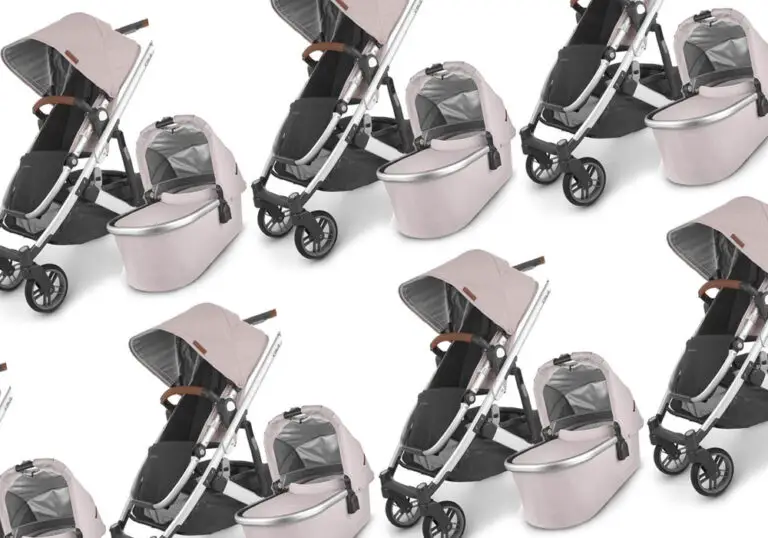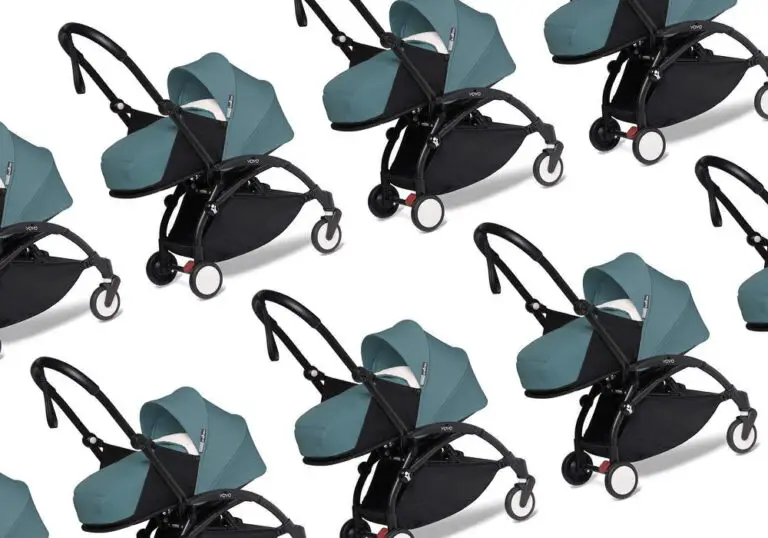Nevada Car Seat Laws 2024 (Rear, Forward & Booster)

Nevada car seat laws require a child passenger under 6 years of age, weighing 60 pounds or less or shorter than 57 inches, to be secured in a child safety restraint system.
The restraint must meet federal safety standards and be installed according to the manufacturer’s instructions. Violating the law carries a range of penalties.
Disclaimer: This content does not constitute legal advice. It is solely for informational purposes. We recommend you check the original source of the law for the latest version.
- NV Rear-Facing Seat Law
- NV Forward-Facing Seat Law
- NV Booster Seat Law
- NV Child Front Seat Law
- NV Child Seat Belt Law
- NV Taxi Child Seat Law
- NV Ridesharing Seat Law
- NV Child Seat Repl. Law
- Leaving Child in Car in NV
- Choosing a Child Seat in NV
- Seat Installation Help in NV
Nevada Car Seat Laws
Nevada Rear-Facing Car Seat Law
According to the rear-facing car seat law in Nevada, a child under 2 years of age must be restrained in an infant rear-facing car seat in the backseat of the vehicle. (1) If they are secured in the front seat, the passenger-side airbag must be deactivated.
A child can also be placed in the front seat if they have any special health care needs certified by a physician, or all backseats of the vehicle are occupied by children younger than 2 years, or the vehicle does not have a back seat.
The rear-facing car seat age in Nevada is 2 years. A violation of Nevada rear-facing child seat law carries a fine. The first offense is punishable with a fine of $100 to $500 or 10 to 50 hours of community service.
The second offense carries a fine of $500 to $1000 or 50 to 100 hours of community service. In case of a third and subsequent offense, the driver’s license will be suspended for 30 to 180 days.
Age: Newborn to 2 years
Height: Less than 57 inches
Weight: 60 pounds or less
Penalty: $100-$500 or 10-50 hours community service for a first time; $500-$1000 or 50-100 hours community service for a second time; suspension of driver’s license for 30-180 days for a repeat violation
Nevada Forward-Facing Car Seat Law
There is no forward-facing car seat law in Nevada. Under the Nevada car seat regulations, children younger than 6 years, weighing 60 pounds or less, and shorter than 57 inches must be secured in an appropriate child restraint. (1) The Nevada Department of Motor Vehicles (DMV) recommends keeping your child in a rear-facing seat till they outgrow its upper height or weight limits. (2)
Since there is no formal Nevada forward-facing child seat law, the forward-facing car seat age in Nevada is also absent. The National Highway Traffic Safety Administration (NHTSA) recommends that a child remains in a forward-facing seat with a harness and tether till they outgrow the limits prescribed by the manufacturer.
Violating Nevada child seat laws carries a penalty. The first offense is punishable with a fine of $100 to $500 or 10 to 50 hours of community service. The second offense carries a fine of $500 to $1000 or 50 to 100 hours of community service. In case of a third and subsequent offense, the driver’s license will be suspended for 30 to 180 days.
Age: Less than 6 years
Height: Less than 57 inches
Weight: 60 pounds or less
Penalty: $100-$500 or 10-50 hours community service for a first time; $500-$1000 or 50-100 hours community service for a second time; suspension of driver’s license for 30-180 days for a repeat violation.
Nevada Booster Seat Law
According to the child booster seat law in Nevada, a child less than 6 years of age and shorter than 57 inches should ride in a federally-approved booster seat. (1) The seat must be installed as per the manufacturer’s instructions. You can choose either a high-back or backless booster seat.
The booster seat age in Nevada is not prescribed explicitly. But once a child passes the upper height and weight limits of a forward-facing seat, they can start riding in a booster seat with a lap and shoulder belt. The Nevada DMV suggests that they remain in the booster till they are big enough to fit in a seat belt properly. (2)
Not following Nevada booster seat requirements entails a fine and may include community service. The first offense carries a fine of $100 to $500 or 10 to 50 hours of community service.
The second offense carries a fine of $500 to $1000 or 50 to 100 hours of community service. In case of a third and subsequent offense, the driver’s license will be suspended for 30 to 180 days.
Age: Less than 6 years
Height: Less than 57 inches
Weight: 60 pounds or less
Penalty: $100-$500 or 10-50 hours community service for a first time; $500-$1000 or 50-100 hours community service for a second time; suspension of driver’s license for 30-180 days for a repeat violation
Nevada Child Front Seat Law
There is no specific child front seat law in Nevada. But the American Academy of Pediatrics (AAP) recommends keeping children in the backseat till they are 13 years old since it is safer. So even though the front seat age in Nevada is absent, it is best to follow AAP’s recommendations.
Nevada state law does not prohibit children from traveling in the front seat. However, you must be careful. In the case of a rear-facing seat, the passenger-side airbag must be deactivated. The child’s car seat must be appropriate for their height and weight. The vehicle seat must be pushed as far back from the airbag as possible.
It is vital to follow these requirements to ensure the complete safety of your child in the front seat.
Age: Recommended- 13+ years
Nevada Child Seat Belt Law
According to the child seat belt law in Nevada, children aged 6 or above or taller than 57 inches (regardless of age) must wear a seat belt. (3) This applies regardless of whether they are in the front seat or the backseat.
Under Nevada children’s seat belt law, if the passenger is 6 years or older but less than 18 years or is taller than 57 inches, the driver will be responsible if they are not wearing a seat belt.
Seat belt rules in Nevada do not apply if the child passenger cannot wear a seat belt due to a medical or physical reason. It must be certified by a physician or an advanced practice registered nurse.
Additionally, they are not applicable to vehicles that were not required under federal law to have an adult safety belt.
Violating these requirements entails a maximum fine of $25 or may involve community service.
Age:6 to 18 years
Height: Taller than 57 inches
Penalty: Maximum $25
Nevada Taxi Child Seat Law
According to the taxi child seat law in Nevada, taxis are not required to have a child passenger safety system in place. (1) They are considered public transportation and are thus exempt from child seat requirements in Nevada. The driver is not responsible for providing a car seat.
However, as parents and caregivers, it is best if you arrange an appropriate taxi child seat in Nevada. Depending on your child’s age, height and weight, you can select a rear-facing, forward-facing, or booster car seat. These car seats will provide adequate protection for your child.
When installing the car seat in a taxi, it is your responsibility as a caregiver to ensure that it is securely fixed. You can refer to the car seat manual for proper installation.
Nevada Ridesharing Child Seat Law
There is no clear ridesharing child seat law in Nevada.
As per the car seat laws in Nevada, a child younger than 6 years, weighing 60 pounds or less or shorter than 57 inches, has to be secured in an appropriate child restraint. (1) The driver will be responsible for any violation.
There is no mention of rideshare services such as Uber or Lyft.
It is best for either the driver or the parents/caregivers to provide a child seat. An infant should be placed in a rear-facing car seat.
Young children and toddlers should ride in a forward-facing car seat. Once they outgrow it, they should ride in a booster seat till they are big enough for the safety belt to fit them properly.
Nevada Child Seat Replacement Law
There is no definite child seat replacement law in Nevada. Ideally, the car seat should not be used beyond the date prescribed by the manufacturer.
The National Highway Traffic Safety Administration (NHTSA) recommends replacing the child safety seat after an accident in Nevada. In case of a moderate or severe crash, you should immediately replace the seat.
But if it is a low-impact accident, there is no urgent need to replace the car seat. A low impact crash is where no passenger is injured, the door nearest to the car seat is not damaged and the seat itself shows no visible damage.
Apart from child seat replacement after an accident, you must also replace it after it has surpassed the manufacturer’s prescribed date or been recalled.
Leaving Child in The Car in Nevada
According to the law on leaving a child in a vehicle in Nevada, a child 7 years old or less shall not be left intentionally in a car if the conditions present a risk to their well-being. (4)
The parent, legal guardian, or person responsible for leaving a child unattended in a vehicle will be guilty of a misdemeanor.
The most common danger of leaving a child in a vehicle is suffering from a heat stroke. Children’s bodies heat up more quickly than adults.
Hence, heat stroke can significantly endanger their safety. They can also have an in-car accident, set the car in motion if it is running, or be kidnapped.
However, leaving a child in the car in Nevada is allowed if the child is under the supervision and within sight of a person who is at least 12 years old.
Choosing a Child Car Seat in Nevada
When choosing a car seat in Nevada, you should refer to the best practices of the Nevada DMV. (2) From the time your child is born till they turn at least 2 years old, a rear-facing car seat is the best car seat to use in Nevada. They can then move to a forward-facing seat with a harness and teether.
Once your child reaches the maximum height and weight limits of the forward-facing seat, they should use booster seats. A high-back or backless seat is the best booster seat to use in Nevada. Every car seat that you use must meet federal safety standards.
Car Seat Installation Help in Nevada
Child passenger safety seats in Nevada must be installed as per the manufacturer’s instructions. Installing them can be a tedious task, especially if you have not done it before.
To help you with it, the state has different stations with certified Child Passenger Safety (CPS) technicians.
You can get your car seat checked or installed and also learn more about child passenger safety. Some of the stations where you can get assistance are:
- Remsa Health (Point of Impact)
- Safe Kids Clark County
- Renown Children’s Hospital’s Car Seat Safety Station
- West Wendover Fire Department
- Summerlin Hospital
- Ron Wood Family Resource Center
Nevada Car Seat Safety Resources
Some resources that you can refer to for more information on car seats in Nevada include:
- Nevada State Police Office of Traffic Safety: The State’s official Occupant Protection and Child Passenger Safety Program, it encourages the use of seat belts and child safety restaurants. It also provides information for parents/caregivers on car seats and CPS technicians.
- Remsa Health: It provides emergency medical services round the clock as well as public education in Nevada.
- Safe Kids Clark County: A division of Safe Kids Worldwide, it provides vital resources and car seat safety tips. It also conducts educational programs for parents and caregivers on child passenger safety.
FAQ
How long should a child ride in a rear-facing car seat in Nevada?
As per the law, children should ride in a rear-facing car seat till the age of 2 years. They should continue riding rear-facing til they outgrow the seat.
Can you put a rear-facing car seat in the front seat in Nevada?
You can put a rear-facing seat in the front seat in Nevada. The law allows that. However, the front seat passenger-side airbag must be deactivated.
Can you put a rear-facing car seat in the middle rear seat in Nevada?
You can put a rear-facing car seat in the middle rear seat if your vehicle has lower anchors in the middle. Check your vehicle and car seat manuals.
When can a baby face forward in a car seat in Nevada?
A baby can face forward after they have outgrown the limits of their rear-facing seat. This typically happens around 2 years of age but may take longer.
How old for a booster seat in Nevada?
Children younger than 6 years and shorter than 57 inches should ride in a booster seat. They should transition to a booster once they outgrow their forward-facing seat.
When to use a backless booster seat in Nevada?
You can use a backless booster seat if your vehicle seat has a headrest and the child’s ears are not higher than the seat back.
When can a child sit in the front seat with a booster in Nevada?
Children should ideally ride in the backseat. But they can ride in the front seat with a booster with the seat pushed as far back from the dashboard as possible.
When can a child stop using a booster seat in Nevada?
A child can stop using a booster seat when they turn 6 years old or reach 57” in height, whichever occurs first. They can then start using the seatbelt.
When can a child sit in the front seat in Nevada?
Nevada law does not prohibit children from sitting in the front seat. However, they should be restrained in an appropriate child safety system that meets federal standards.
When to switch from 5 point harness to a seat belt in Nevada?
When the child outgrows the height and weight limits of the 5-point harness, they can switch to wearing a seat belt in a booster seat.
When can a child use a regular seat belt in Nevada?
Under the law, a child can start using a regular seat belt once they are 6 years old or stand at least 57” tall (regardless of age).
Do you need a car seat in a taxi in Nevada?
Taxis are not required to have a car seat. However, it is recommended that you carry an appropriate car seat for maximum protection of your child.
Do you need a car seat in a Uber in Nevada?
The law is unclear on this subject. But either the parent/caregiver or the driver should provide a federally approved and appropriate car seat for the child.
Do you need a car seat in a Lyft in Nevada?
The law is not clear on this issue. But either the caregiver or the driver should provide an appropriate car seat to ensure the child’s safety.

Rishima Rawat
Rishima Rawat is a lawyer and legal writer with over six years of writing and legal experience. She earned her LLB degree from the West Bengal National University of Juridical Sciences, Kolkata. With a passion for child safety, she’s written extensively about the U.S. car seat laws in ParentingMode. She collaborates with businesses and law firms globally, enhancing their online content. Her insights are also published in legal journals like RGNUL, NLIU, and RMLNLU Law Review. Committed to the cause of education, she has volunteered with IDIA, which helps underprivileged children in India to access legal education. She has also worked with Enhelion Knowledge Ventures, a leading legal ed-tech platform in India that provides students with affordable courses in law. Fluent in English and Hindi with elementary proficiency in Spanish, Rishima combines her legal expertise with a dedication to child safety.






